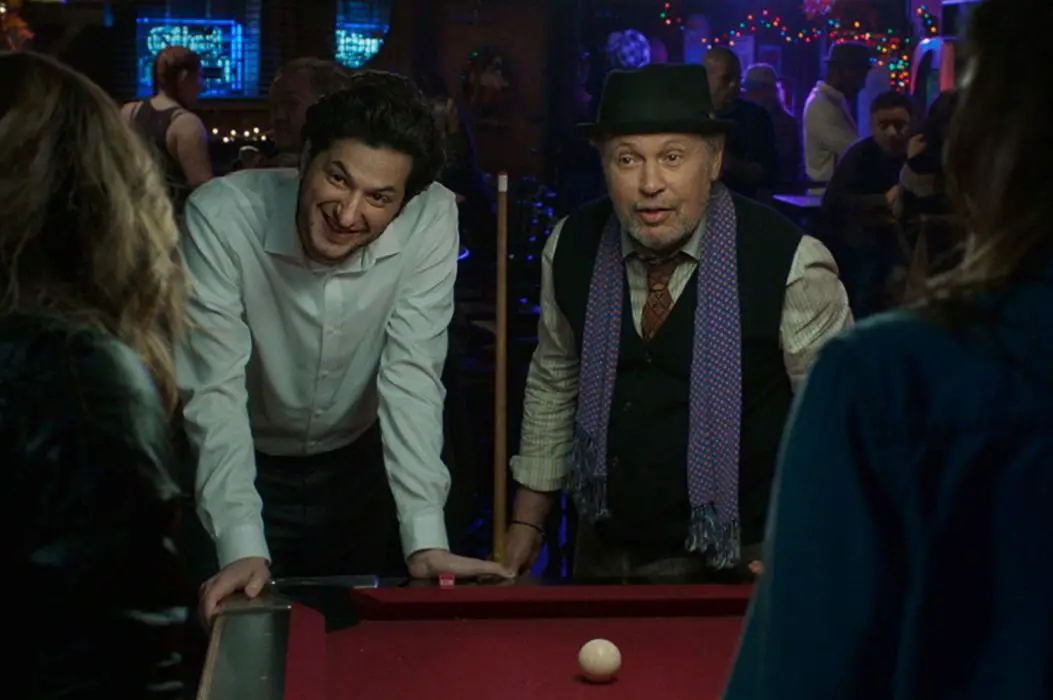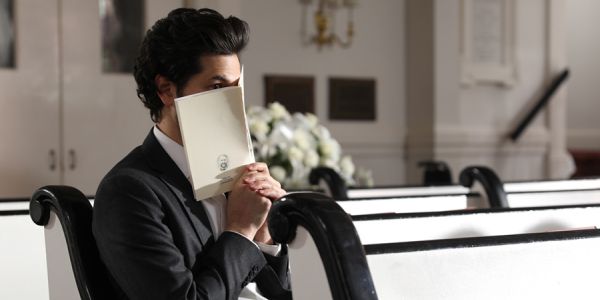STANDING UP, FALLING DOWN: A Minor Vehicle For The Comedy’s Stars

Tynan loves nagging all his friends to watch classic movies…
It would be easy to stay cynical and say the reason small, independent productions have at least one “Name” is merely from a prospective business point of view. Unless you’re self-financing the thing, there’s barely a chance in a million you’ll get the project off the ground. There’s some truth in this. It makes monetary sense. However, you could also look at it another way. It’s these kinds of movies that become showcases for talents we are fond of — actors we have a history with — and in some cases, those who feel like they have been out of the limelight for some time.
Billy Crystal is like that for me. He made me want to see Standing Up, Falling Down based on the very simple pleasure of seeing him once more, even if it was only in the periphery. For all those who remember The Princess Bride, When Harry Met Sally, and City Slicker days, he was a welcomed person on the screen. Meanwhile, his Oscar host platooning is second only to Bob Hope.
In some ways, he’s cultivated an ongoing friendship with a lot of people thanks to his presence in entertainment. Sometimes that’s all we need to watch a movie. However, it’s a shame when it feels like that might be most of what the movie has to offer.
Taking Stock of The Script
There’s nothing altogether new here with a bit of Garden State sprinkled in with The Big Sick and any other character piece about a struggling, 30-something stand-up comedian. In fact, right off the bat, the movie loses a few points for a thoroughly unoriginal premise. Garden State had the benefit of a stellar soundtrack and being “OG” as the kids used to say, while Kumail Nanjiani’s movie courted more complex themes.
Considering this company, Peter Hoare‘s screenplay rehashes ideas that feel almost dead on arrival; we’ve seen them so often. The problem is this is also an example of generally conventional filmmaking, so it falls squarely on the strength of its narrative and, in time, its leads.

Ben Schwartz (beloved as Parks and Rec’s malcontent Jean-Ralphio) is slightly more real and pathetic as Scott, the aforementioned comedian who has come home with his tail between his legs. To spell it out, he’s a 34-year-old living in his parents’ home without employment or any real direction in life. (Again, stop me if you’ve heard this one before.)
His baby sister (Grace Gummer), also in her 30s, is playfully antagonistic, his mother (Debra Monk) is the doting type taken to embarrassing extremes, while his father (Kevin Dunn) has trouble expressing his emotions. The interplay on all sides often feels too cute, striving to be constantly lithe and zippy without being able to totally pull it off.
Given Scott’s proposed profession, already built into the script, it’s supposed to give pretense for humor. Of course, he goes through phases. First, he’s meant to fall flat on his face and then, over time, he starts to live again, forming a relationship that starts the creative juices floating — providing newfound fodder for his tanked stand-up career. If nothing else, it’s a not so subtle reminder of how life inspires art.
The Saving Grace
Thankfully Scott and Marty get together. Finally! We get Billy Crystal. It was meant to be. While the movie mostly squanders their talents or at the very least, squanders their personalities, they still manage to be the movie’s saving grace. As it should be. And of course, in a film like this where else could we foresee them meeting but the men’s room in a bar?
This is Scott’s first glimpse of the swacked dermatologist who will turn into his closest confidante. True to form, the various attempts to be funny feel half-hearted before invariably devolving into something off-color with an even lesser degree of sincere wit.
But they give it a go, and it’s a valiant effort. One of the brief glimpses of appreciation comes early with Crystal in front of the TV. A noted Yankees baseball fan in real-life, he sits in front of his TV watching an old Mets ball game plucked out of the 80s, all alone — games his estranged son won’t watch with him anymore.

Even as it looks to put its humorous foot forward, Standing Up, Falling Down also wants to extend itself on a dramatic front. It simultaneously positions itself as a story about loneliness, life crises, and family issues. For Scott, it’s not so much “the one that got away” but the girl he ran away from (who now conveniently is married to a successful local guy). For Marty, it’s coming to terms with the mistakes he made in life. The need to reconcile with grown children and to make peace with spouses now deceased.
The beauty of their purposefully “unorthodox” friendship is a genuine point of connection. In scripting terms, they are reciprocating sounding boards to allow each other to express themselves for the benefit of the audience.
The Best Moments
While the exposition often feels a bit uneasy and forced, probably the best scenes spring to life thanks to wackiness and shedding this sense of sobering reality. They turn into a pair of hecklers at a funeral like Statler and Waldorf — bonafide wake crashers — and they’re both there with an ulterior motive. Scott to see his old flame. Marty to talk with his son.
There’s another scene that evolves out of nothing. They start taking a drag at the park only to be confronted by a security guard who scares the living crap out of them. A minute later, they realize they have a mutual connection and instantly Ruis becomes a legitimately chill dude.

Still, Scott keeps on getting mixed signals from his old girlfriend (Eloise Mumford) only for it to erupt into chaos. His rival, a former track star, chases after our hapless hero to preserve the honor of his wife. He chases after Scott and gives him a punch; they both howl with pain pitifully. One thanks to his offending hand. The other for his busted nose. Neither of them has ever experienced the sensation before. It puts them out of their element, and it’s surprisingly endearing.
These are the sparse moments where the story is able to shed the cringy wannabe repartee or the conveniently unraveling personal wounds, to give us something fun. Only in these moments does the movie seem to function outside of agenda or purpose. Where Crystal and Schwartz get to chew the fat, enjoy each other’s company, and possibly for the sake of the movie, form some kind of camaraderie.
Final Thoughts: Standing Up, Falling Down
In the end, it should be noted Scott adheres to conventional tropedom by foregoing the blonde (granted with streaks of red in her hair) and going for the ever-trusty brunette (Caitlin McGee), supplying his hopeful ending. Likewise, Marty gets what amounts to a last laugh over the younger generation thanks to his newfound friend.
I’m not sure if I cared enough to appreciate the sentiments. Unfortunately, my admiration for Crystal and Schwartz were the only factors keeping me mildly engaged with Standing Up, Falling Down. Regrettably, it’s less of the former and more of the latter.
What is an instance of a small independent film using a “Name” star well? Please let us know your thoughts in the comments below!
Standing Up, Falling Down will be released in theaters in the U.S. on February 21st, 2020.
Does content like this matter to you?
Become a Member and support film journalism. Unlock access to all of Film Inquiry`s great articles. Join a community of like-minded readers who are passionate about cinema - get access to our private members Network, give back to independent filmmakers, and more.
Tynan loves nagging all his friends to watch classic movies with him. Follow his frequent musings at Film Inquiry and on his blog 4 Star Films. Soli Deo Gloria.













